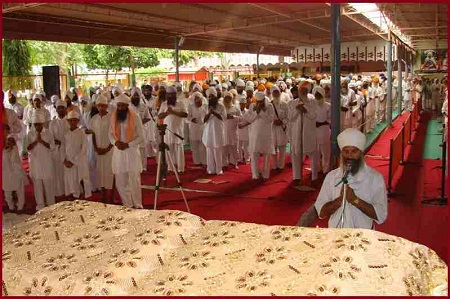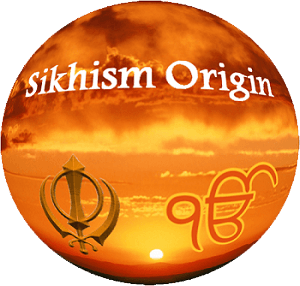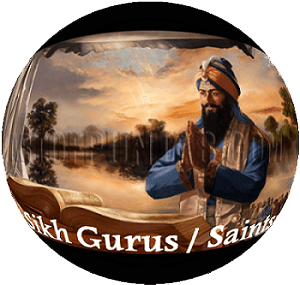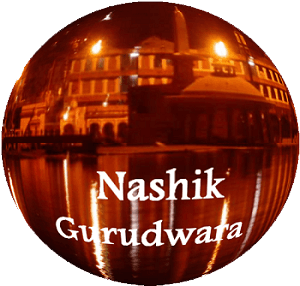- Festivals -
6. Vaisakhi
Guru Amar Das first institutionalized this as one of the special days when all Sikhs would gather to receive the Gurus blessings at Goindwal in 1567. In 1699 Guru Gobind Singh gathered thousands at Anandpur Sahib and founded the Khalsa order by baptizing 5 brave Sikhs who were willing to give their life for the Guru. The Five Beloved Ones in turn baptized Guru Gobind Singh into the Khalsa brotherhood. This day celebrated around April 13 is considered the birthday of the Khalsa order. Sikhs visits gurdwaras and fairs and parades are held. Many Sikhs choose to be baptized into the Khalsa brotherhood on this day, as well the wrappings of the Nishan Sahib flag post at most gurdwaras are changed on Vaisakhi. Note: Vaisakhi is not the Sikh New Year. Vaisakhi occurs in the second month of the Sikh calendar. The Sikh New Year is on Chet 1 according to the Sikh calendar which occurs on March 14th every year. See the Sikh Calendar for more information
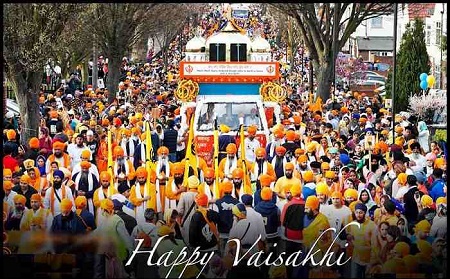
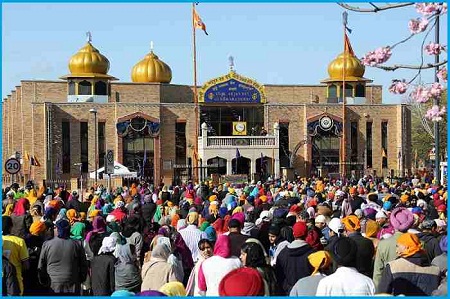
7. Bandi Chhor Divasi
On Bandi Chhor Divas 1619 the Golden Temple was illuminated with many lights to welcome home and celebrate the release of Guru Hargobind from imprisonment in Gwalior fort. Sikhs have continued this annual celebration with lamps being lit outside gurdwaras and sweets distributed to all. The largest gathering happens at The Golden Temple which is lit up with thousands of lights.
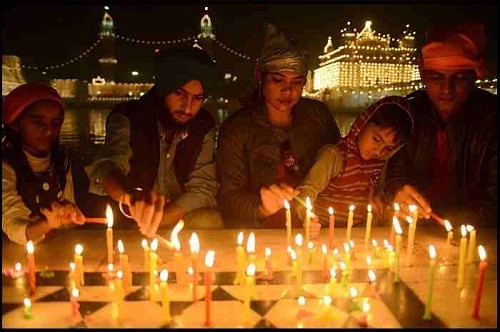
8. Maghi
Sikhs visit gurdwaras and listen to kirtan on this day to commemorate the martyrdom of the Forty Immortals. The largest gathering happens at Muktsar where an annual fair is held. It occurs on the first day of Maghar Sangrant, around January 14. Forty followers of Guru Gobind Singh who had previously deserted him, fought bravely against overwhelming Mughal army forces and were martyred here. Guru Gobind Singh personally blessed them as having achieved mukti (liberation) and cremated them at Muktsar.
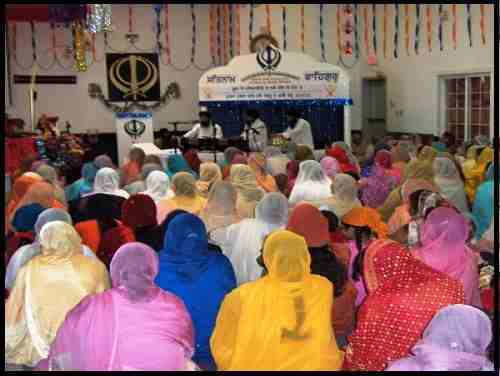
9. Hola Mohalla
An annual festival of thousands held at Anandpur Sahib. It was started by Guru Gobind Singh as a gathering of Sikhs for military exercises and mock battles on the day following the Indian festival of Holi. The mock battles were followed by music and poetry competitions. The Nihang Singh's carry on the martial tradition with mock battles and displays of swordsmanship and horse riding. There are also a number of durbars where Sri Guru Granth Sahib is present and kirtan and religious lectures take place. The festival culminates in a large parade headed by the nishan sahibs of the gurdwaras in the region. Hola Mohalla is held around March 17.
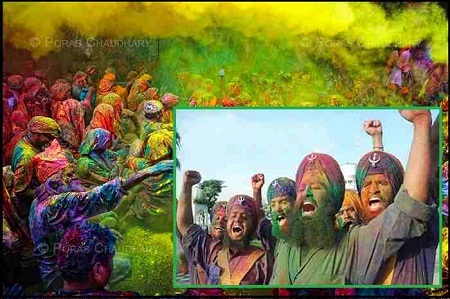
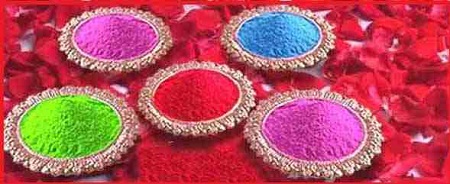
10. Sangrand
This is the time when the sun passes from one sign of the zodiac to the next, it is the start of the new month in the Indian calendar. The beginning of the new month is announced in the gurdwaras by the reading of portions of Bara Maha, Song of the 12 Months, by Guru Arjan (pg. 133) or sometimes Bara Maha by Guru Nanak (pg. 1107). This day just marks the beginning of the new month and is not treated as being greater or better than any other day.
